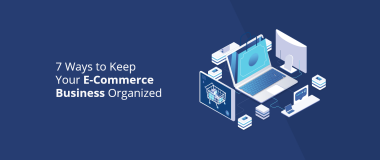As the online shopping industry expands, there are some major eCommerce challenges sellers have to face. According to Statista, the retail eCommerce revenue in the US alone amounts to over $4.5 billion in 2021, and is expected to grow by $1billion over the next five years.
With such explosive growth, no wonder threats to businesses come from practically anywhere. From stiff competition and cybersecurity attacks to managing high customer expectations and the latest best business practices, online sellers have a lot to deal with.
The eCommerce business model has many benefits, which explains why so many entrepreneurs want to join. It allows sellers to reach a large number of customers – locally and internationally, faster and at a lower cost. It enables greater personalization of the shopping experience, increased findability of items, and improved market targeting.
However, even though this approach to selling has made shopping much more convenient, it has also brought quite a few obstacles to the forefront.
In this article, we will be addressing seven of the biggest eCommerce challenges that sellers face today, and give you ideas on how to solve them.
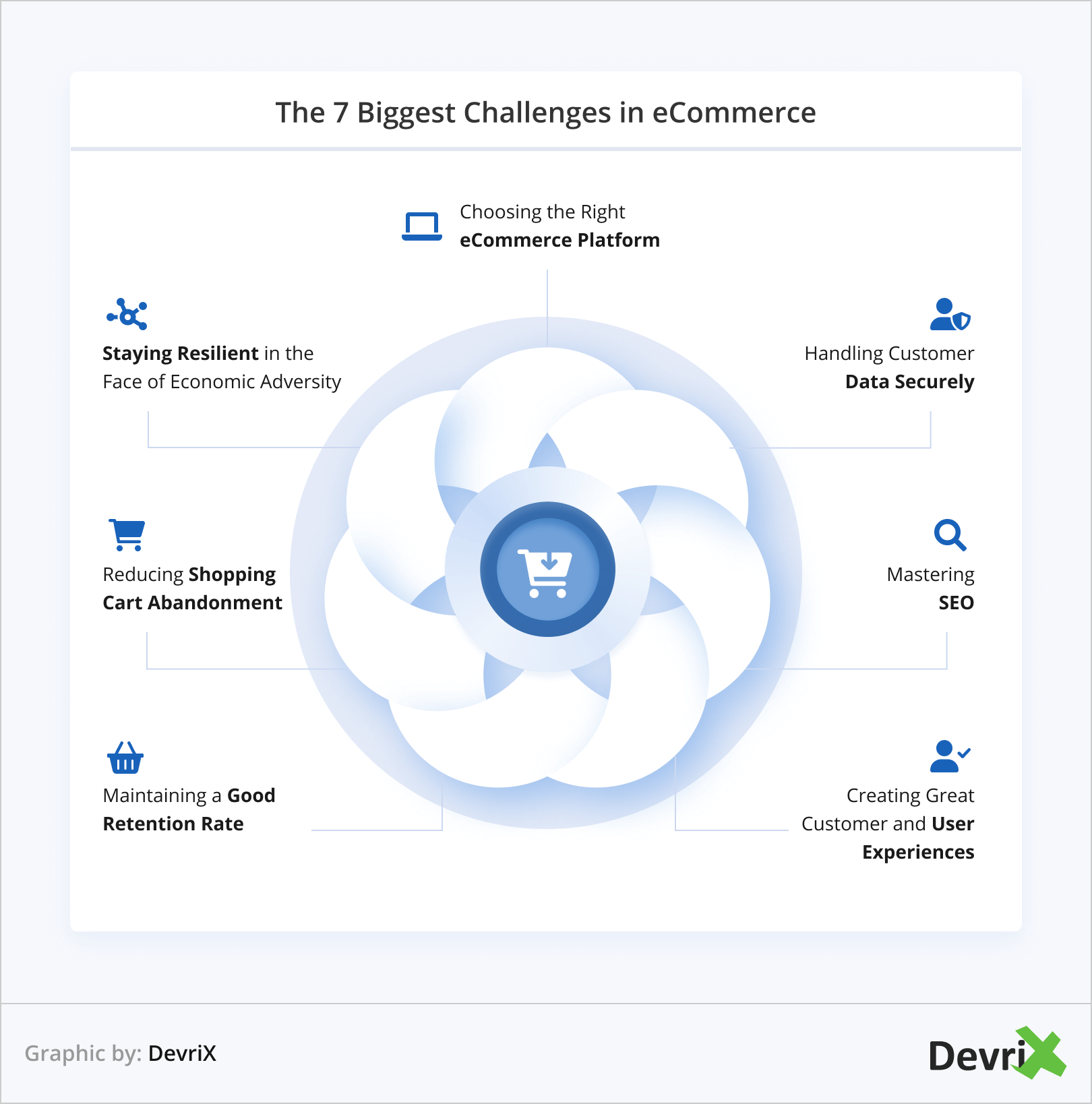
1. Choosing the Right eCommerce Platform
When making the decision to sell products online, you first need to choose an appropriate eCommerce platform to act as a central hub for your business.
The right software solution should allow you to easily manage everything related to your eCommerce store – website, operations, marketing, and sales. This means that it should enable the integration of common business tools while including powerful features that would help you run your business.
There are two main types of eCommerce platforms to choose from. Let’s take a look at them.

SaaS eCommerce Solution
A SaaS eCommerce platform is an online shopping software with a cloud-based system that can be accessed through different web browsers. It’s usually sold on a subscription basis and allows businesses to quickly set up an eCommerce solution while saving on infrastructure installation and maintenance costs.
If you want to kick off your start as an eCommerce store, then a SaaS eCommerce solution (like, for example, Salesforce) might be the right choice for you. However, keep in mind that if you do go for this option you’ll likely have to pay one flat high fee for all available features even if you only use some of them.
Open-Source eCommerce Solution
An open-source eCommerce solution is a platform where developers have full access to the source code. This enables free usage and customization, both of which, are often developed and updated collaboratively. An example of a great open-source eCommerce platform is WooCommerce.
This type of solution will work well if you want to not only start your own eCommerce store in a relatively short time and without any advanced programming skills but also if you want to test a new eCommerce idea with real customers. You just have to pick an appropriate theme and plugins that cater to your business needs.
You should keep in mind that more often than not open source eCommerce platforms don’t let you create a unique interface design. Furthermore, the more themes and plugins you stack and the more complex they are, the greater the website security risks become.
You can bypass this by working with a professional WordPress agency that can design a custom solution for you with themes and plugins tailored to your business needs.
2. Handling Customer Data Securely
Today’s digital marketers rely heavily on analytics and customer data to better anticipate and understand customer needs. However, this raises concerns amongst customers whether their personal information is being handled securely and kept private.

To avoid the Personalization and Privacy paradox, brands need to be transparent about how they collect private data and set up their security measures. This is no easy job, especially considering how much data becomes compromised every year. However, knowing that you’ve taken precautions will make your customer feel they can trust your brand.
So, here are a few ideas to help you safeguard sensitive information and build trust with your customers.
- Create a Crystal Clear Privacy Policy. Be honest with your customers about how their data is being collected, stored, and used. Double-check that your policies are accurate and up-to-date.
- Periodically Test and Update Your Security. Hackers continuously look for new ways to take advantage of security vulnerabilities, so be quick at finding your weak spots.
- Encrypt User Data. This is incredibly important for all online sellers. Credit/debit card companies require that retailers encrypt card details by default, but if such details are stored on a company server, without robust security protection. there’s a higher risk of a data breach.
- Don’t Store Private Data, Verify It. Distinguish between data you need (like names and addresses) and data you don’t need (credit card details). Keep the ones you will use for marketing purposes and partner with a trusted third-party organization to protect the more sensitive customer information.
3. Mastering eCommerce SEO
When establishing a new eCommerce shop and bringing it to life, you have to create a plan to help people get to know and recognize your brand. The hack that can really make the difference between a website being in top SERPs and being invisible online is mastering eCommerce SEO.
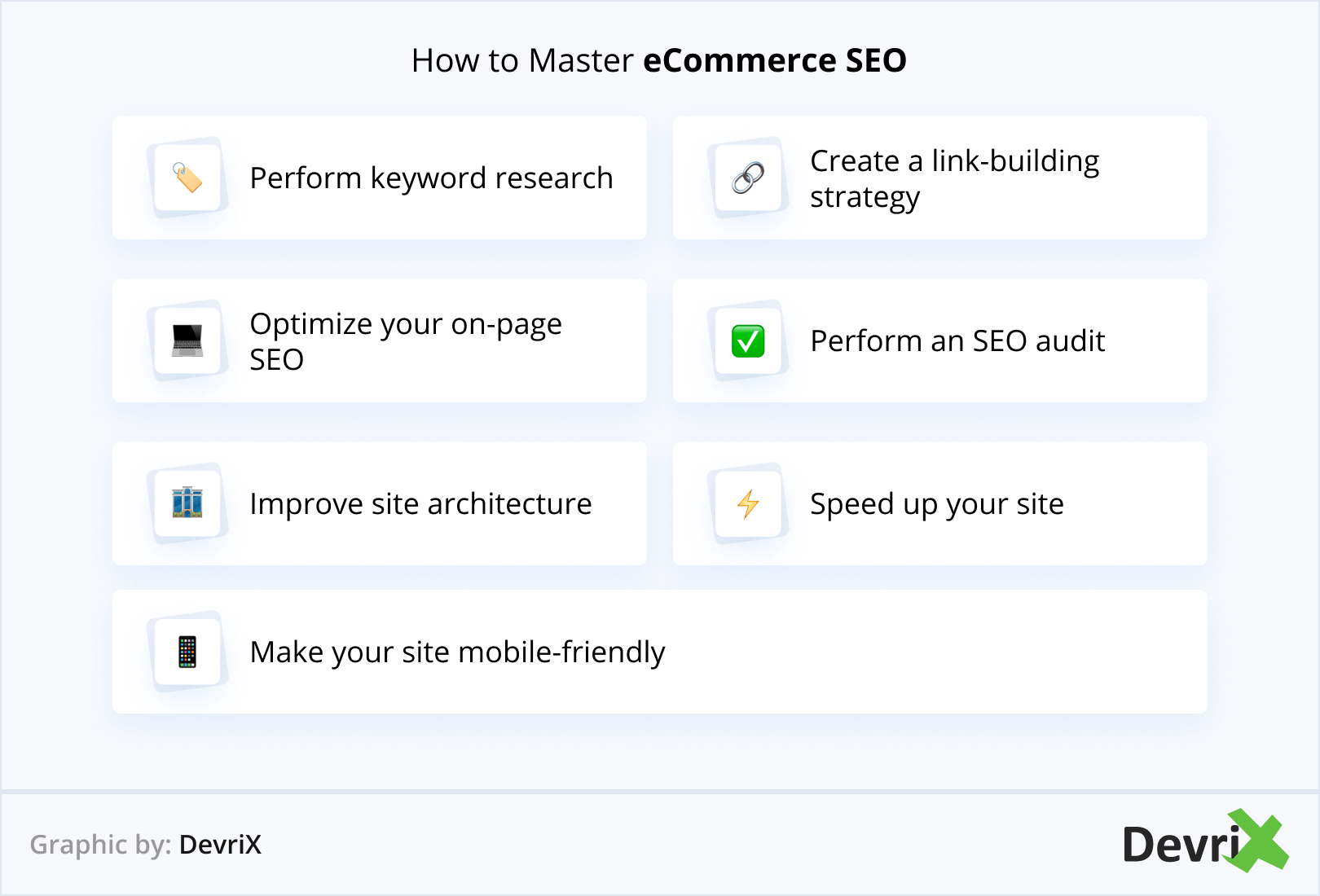
According to Intergrowth, 68% of online experiences start with a search engine, with Google holding 92.27% of the total search engine market share. Furthermore, about 80% of major purchases begin with online research. This makes SEO the backbone of building an online presence, and eCommerce SEO, in particular, is essential to the success of any online business.
However, with new search engine algorithms rolling out every so often, mastering eCommerce SEO can be quite the challenge. So here are a few tips you can incorporate in your SEO strategy to stay on top of your game.
- Perform Keyword Research. Make sure that your site includes keywords that are in alignment with your shopper’s intent, and create a strategy to rank for them. Inspect all of your content, especially your product descriptions and names and your pages’ metadata.
- Optimize On-Page SEO. In addition to keywords, you need to pay attention to other on-page elements that can affect your site’s SEO, such as page titles, URLs, meta descriptions, image alt-tags, and backlinks.
- Improve Site Architecture. This element is important for both SEO and user experience. Hence, you need to ensure that your website has a clear, logical structure, with proper product categories and subcategories.
- Make Your Site Mobile-Friendly. Mobile sales make up as much as 73% of all e-sales, making mobile-friendliness an integral part of any eCommerce SEO strategy. Designing your website to look good on devices of all shapes and sizes will also improve the user experience, not to mention it’s an important ranking factor for Google.
- Create a Link-Building strategy. Backlinks are amongst the top three most important ranking factors for Google. They are a powerhouse for sellers looking to improve their ranking. To have them work in your favor, secure backing from quality, high-ranking domains, and frequently audit your site to remove spam and toxic links.
- Perform an SEO Audit. If you want to learn more about how your website is performing in organic searches and what are the immediate issues you need to fix, you should regularly run SEO audits that evaluate your on-page and off-page performance.
- Speed Up Your Site. Page speed is another important ranking factor that affects UX and sales. According to Hubspot, every additional second of load time results in an average conversion rate drop of 4.42%. So, to improve your site’s speed, compress your product images, use a less-heavy theme, consider lazy-loading. Furthermore, with the core web vitals update in place, slow-loading pages may affect your overall ranking.
4. Creating Great Customer Experience
If you want to scale your eCommerce shop, focusing only on offering amazing products may not be enough. Of course, top-quality goods are a major factor, but you can’t solely rely on that to attract, engage, and retain your customers. It’s the customer experience you create that can set you apart from the competition and ultimately help you thrive and grow.
According to Bloomreach, 40% of B2C and 56% of B2B customers are willing to pay more for a better eCommerce experience, and will not buy from the same seller again if they don’t deliver. What is more, 98% of decision-makers believe that customer service dissatisfaction results in a reduced net promoter score, decreased website visits, market share loss, and revenue to direct competitors.
Here is what to do to ensure your eCommerce store provides a seamless and pleasant eCommerce customer experience (ECX).
- Invest in Pre-Purchase ECX. Look for ways to improve your online reputation. Build trust through proactively providing value to prospects before asking them to take action. Let them know that purchasing from you will help them solve a problem they are facing. Set a foundation for future interactions between your brand and customers.
- During Purchase ECX. As prospects get closer to making a purchasing decision, they will need more detailed information about the product such as pricing, specifications, and availability. They may also need to know about your transactional (e.g. shipping fee, exchanges, returns) and company (e.g. information of ethical operations) policies.
- Post-Purchase ECX. Once a prospect has been converted into a paying customer, you have to shift your focus onto keeping them engaged and retaining them This can be done by sending them updates and promotional offers, developing special marketing initiatives, and taking action according to customer feedback.
5. Maintaining a Good Retention Rate
Loyal customers are at the core of any successful eCommerce shop. If you happen to have a high customer turnover rate, this might be an indicator that something is wrong. Hence why retaining your clients is just as crucial as attracting new ones.
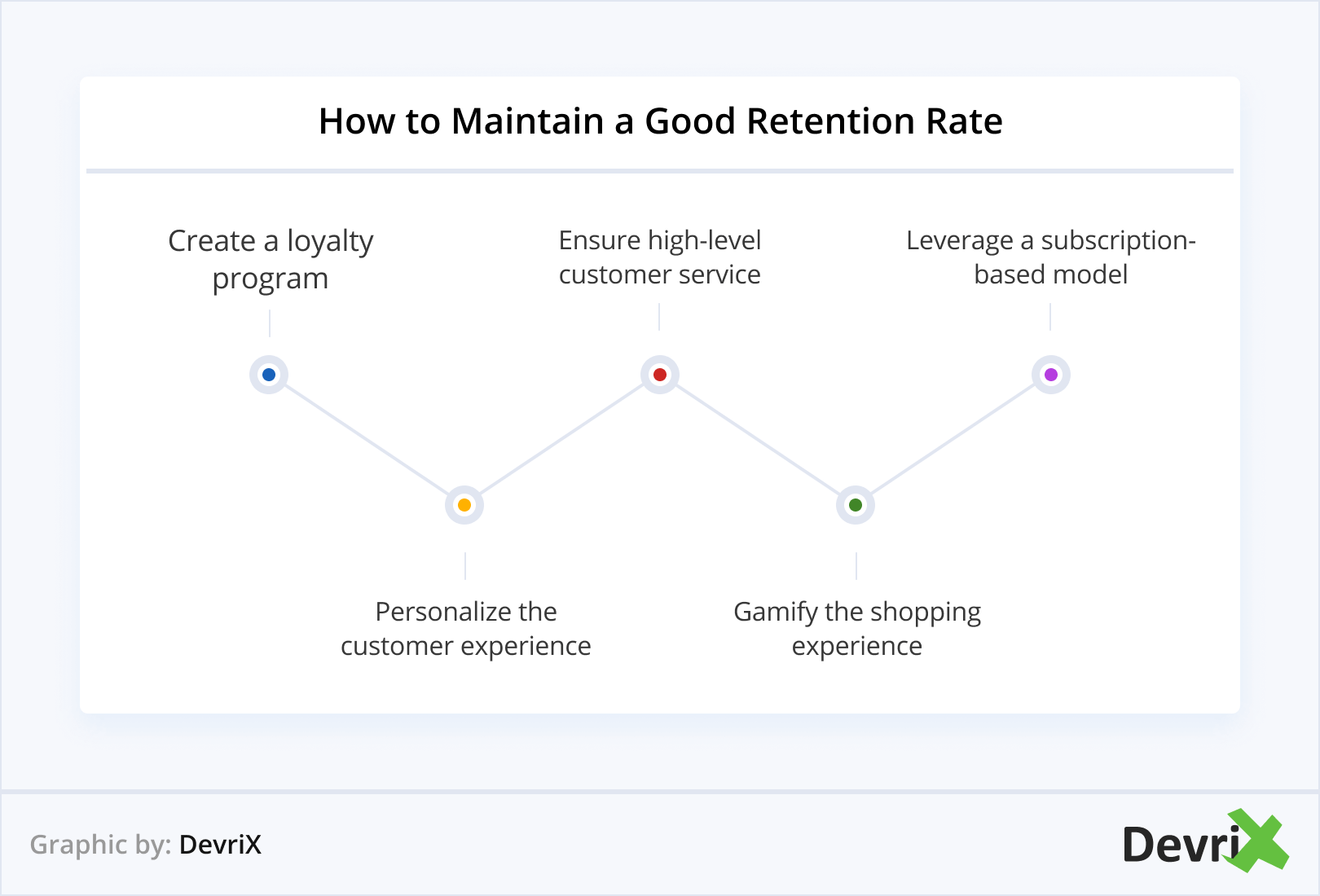
Repeat customers can not only become brand advocates, but they are also likely to spend 33% more per order. Here are a few steps you can take to keep your customers and leverage the benefits of a good retention rate.
- Create a Loyalty Program. Create a positive experience for your customers by offering special discounts, free shipping, or complimentary gifts.
- Ensure High-Level Customer Service. Provide ongoing support, answer your customer’s queries, show interest in solving their problems.
- Leverage a Subscription-Based Model. If you find that some customers are regularly purchasing the same product(s) you can offer them a monthly subscription.
- Personalize the Customer Experience. Learn as much as you can about your customers by tracking website analytics, conducting customer surveys, and studying your audience’s needs.
- Gamify the Shopping Experience. Make the purchasing process more interesting by including progress bars, creating a lottery to win a prize, or offering bonus points that can be exchanged for free shipping and/or discounts.
6. Reducing Shopping Cart Abandonment
A high shopping cart abandonment rate is one of the most common eCommerce challenges sellers have to face. According to data from the Baymard Institute, on average, almost 70% of shoppers leave their shopping carts without completing their purchases. This can happen for several reasons, but in most cases, it all boils down to a poor user experience.
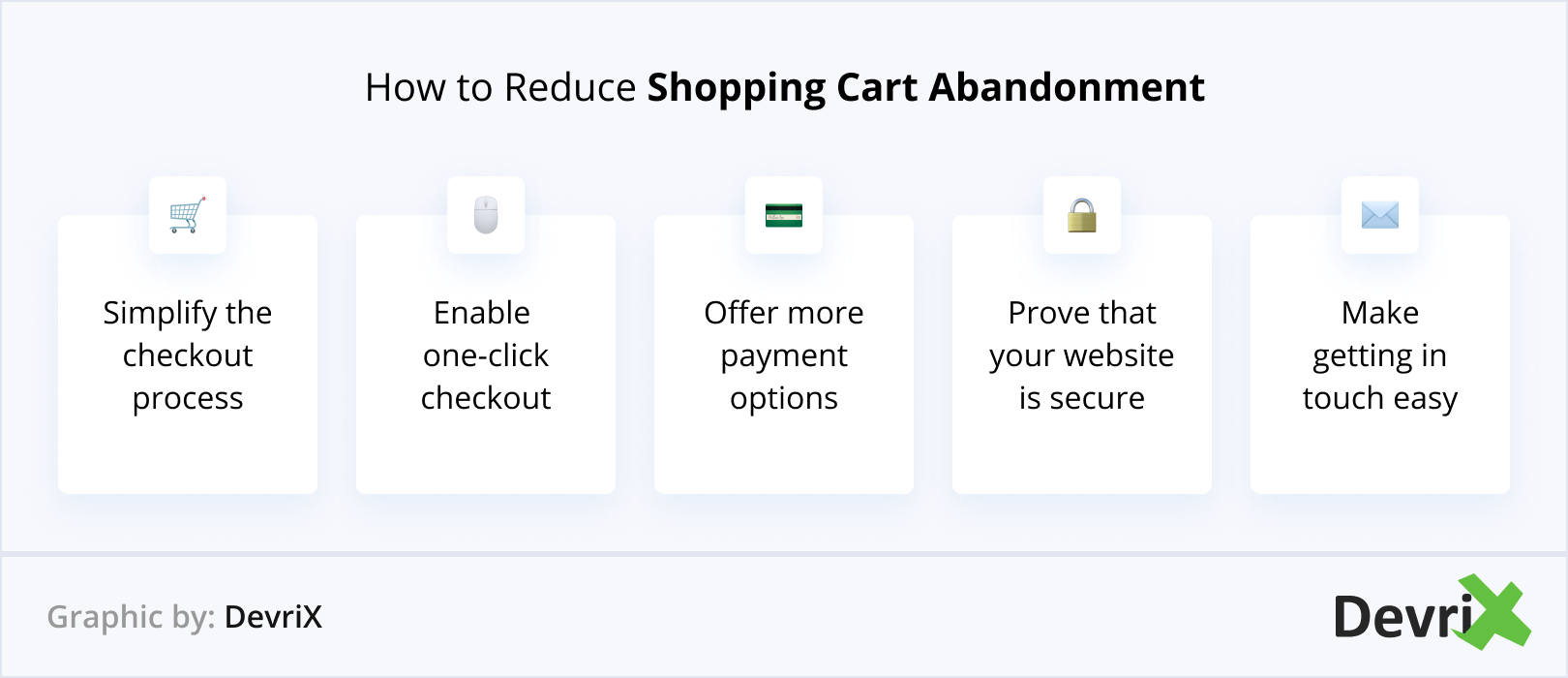
Here are some suggestions on how to reduce the cart abandonment rate:
- Simplify the Checkout Process. Reduce the number of required fields and collect only enough information to process orders.
- Enable One-Click Checkout. Allow users to add products and check out with one click, without having to create an account.
- Offer More Payment Options. Research the preferred payment methods of your target audience and make sure to include them in your platform.
- Prove that Your Website is Secure. Offer customer testimonials, certificates of data compliance, and transparent privacy and return policies.
- Make Getting In Touch Easy. Direct customers to your FAQ page, including an online chat option as well as a callback button.
Read also: Email Tips for Abandoned Shopping Carts
7. Staying Resilient in the Face of Economic Adversity
At some point, every business is faced with economic uncertainty. Markets are volatile, recessions and financial crises happen every now and then, and all companies are affected to an extent. However, there are a few go-to strategies you can implement to ensure that your online marketplace will survive such economic hits.
- Prioritize customer retention. Happy customers will stay with you even through tough times.
- Review Your Suppliers. Strengthen the relationship with your suppliers, or look for alternatives if the charges become too high.
- Look for Product Improvements. Ask your customers for feedback on product performance and look for ways to improve your core product.
- Don’t Spread Yourself Too Thin. Before expanding your market reach, make sure that your main sales operations will remain unaffected.
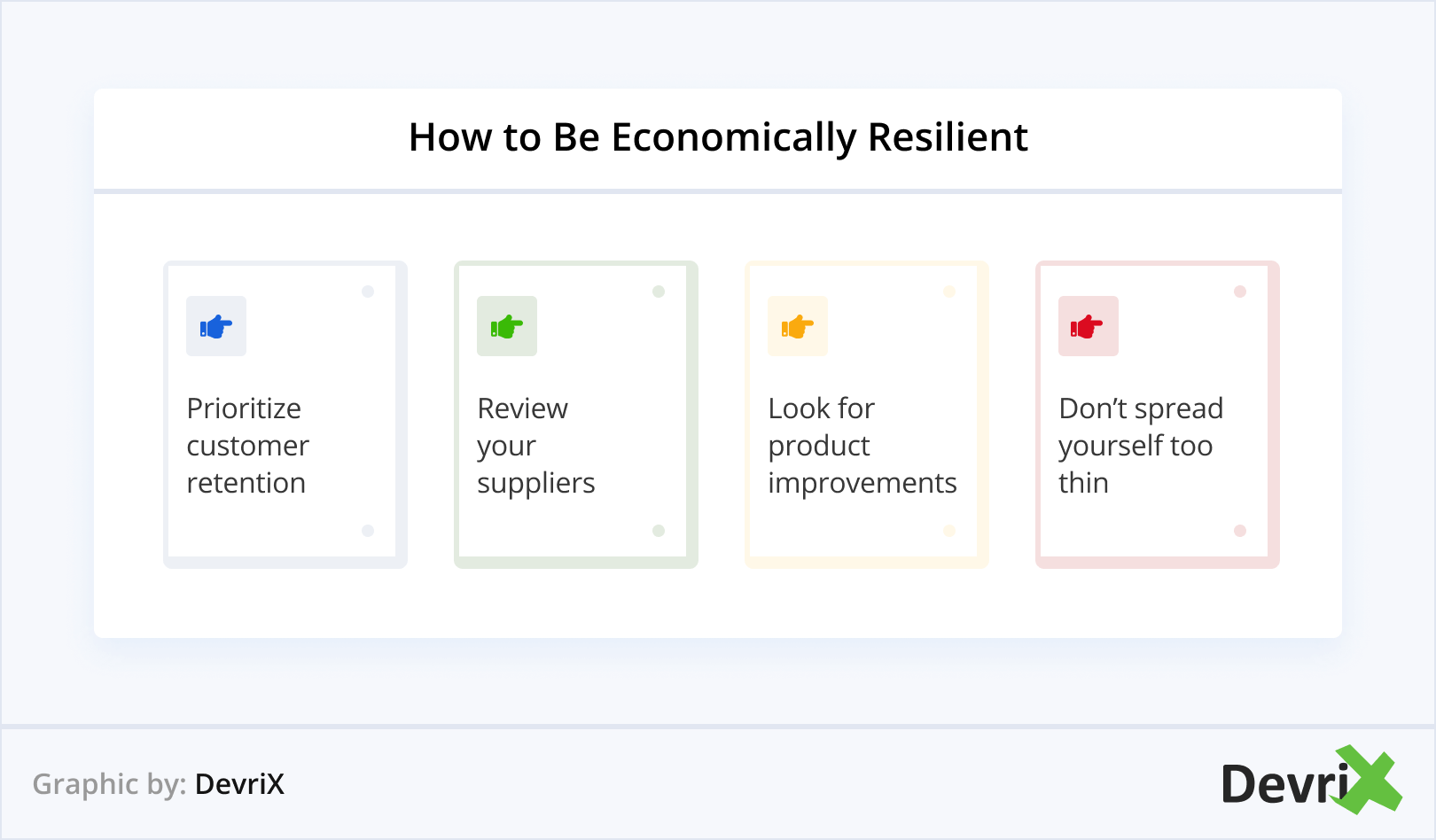
Final Thoughts
Launching an eCommerce store requires work and has its challenges. A successful eCommerce business needs an appropriate web platform, as well as customer data privacy policies that are transparent and secure when handling personal information.
To ensure that your website really grows, you should create an exceptional customer experience and strive to maintain a high customer retention rate. Building a loyal audience and strong business partnerships will also enable you to stay resilient in the face of economic uncertainty and thrive.
If you have decided to set up a platform yourself and are in need of web development help and support, don’t hesitate to contact us.


